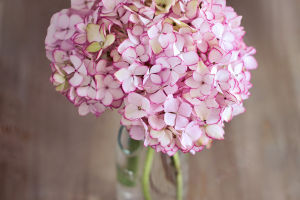Hydrangea is a charming flower, popular for its full head and variety of colors.
Whether it is used as an embellishment for a flower bed or the protagonist of a garden, hydrangeas can bring us colorful visual enjoyment.
Choose the right variety:
There are several varieties of hydrangea to choose from, including bigleaf hydrangea, panicle hydrangea, rubber hydrangea, and more. When choosing varieties, consider your climatic conditions and the setting of your garden.
For example, bigleaf hydrangeas are good for warmer climates, while panicle hydrangeas are more adaptable to colder climates. In addition, the preference for flower color should also be considered. The flower color of hydrangea has blue, pink, white, and other choices.
Determine where to plant:
Hydrangeas like full sun, but will also grow well in partial shade. Choose a well-ventilated and well-drained location to avoid standing water. Be sure to give hydrangeas plenty of room in the garden, as they will expand and form bushy bushes.
Soil and Fertilizer:
Hydrangeas like fertile, moist, well-drained soil. Before planting, add organic matter to the soil, such as well-rotted compost or leaf mold, to improve soil fertility and water retention. Regularly apply the right amount of organic fertilizer to ensure an adequate supply of nutrients for your hydrangeas.
Water and Moisturize:
Hydrangeas have high water needs, especially during growth. Keep the soil moist, but avoid overwatering as it can cause root rot.
In dry weather, water regularly and cover the soil surface with an organic mulch such as wood chips or plant ash to keep the soil moist and reduce evaporation.
Pruning and management:
Regular pruning of hydrangeas is key to keeping them healthy and looking good. At the end of winter, prune away old branches and diseased leaves to encourage new growth. After the flowering period is over, prune the flower bulbs promptly to encourage new flower buds to form. Also, keep your hydrangeas healthy by inspecting the plants and treating any pest and disease issues.
Winter Protection:
Winter protection is very important for hydrangeas in cold climates. Mulch the plant's roots and surrounding soil to keep warm before the cold season sets in. You can also build shade netting or use garden mulch around your hydrangeas for extra protection.
Pest management:
Hydrangeas may be attacked by some common pests and diseases, such as hydrangea rust, leaf spot, aphids, etc. Check the leaves and curds of the plants regularly, and take timely measures when problems with diseases and insect pests are found.
Use suitable insecticides, fungicides, or organic control methods to control the spread of pests and diseases.
Brace and kidnap:
Due to the large and heavy bulbs of hydrangeas, supports are sometimes needed to keep the plant stable. Supports such as torus or sticks can be used to support the curd as it begins to form, preventing it from tipping or breaking. At the same time, use string or rubber bands to gently tie the plants down to help maintain a neat growth pattern.
Propagation and Transplantation:
Hydrangeas can be propagated by division, cuttings, or seeds. The division is the most common method of propagation, and mature plants are divided into small pieces and replanted in the soil in spring or fall.
Cuttings are to cut off healthy branches and insert them into moist seedling soil, and transplant them to a suitable position after they take root. The seeding method is time-consuming and is suitable for gardeners who have patience and time.
When transplanting, choose the appropriate time, usually in spring or autumn, and be careful not to damage the root system of the plant.
Note the seasonal features:
The flowering period and growth characteristics of hydrangeas will vary according to the variety and climatic conditions. Knowing the flowering period and preferences of the selected species can lead to a better arrangement of garden layout and plant combination.
Some hydrangea varieties may bloom in early spring or summer, while others may bloom in fall. According to the characteristics of the season, the cultivation and management of hydrangeas can be reasonably arranged to maximize their beauty.
Hydrangeas are beautiful and diverse flowers that add charm to gardens with their showy colors and plump bulbs. With proper cultivation and management, you can enjoy the gorgeous beauty of hydrangeas in your own garden. Follow the growing tips above and let this gorgeous star bloom in your garden, bringing you endless blooms and delight.


